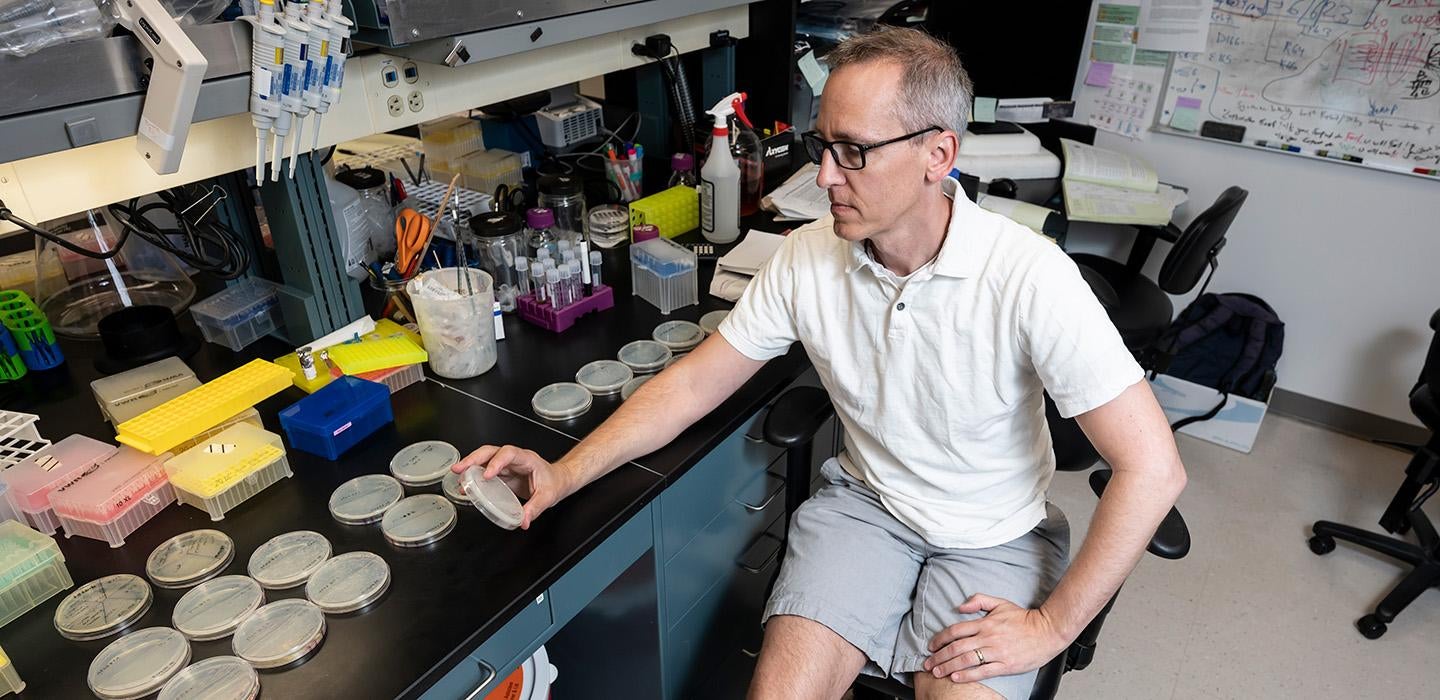
Subscribe to Pittwire Today
Get the most interesting and important stories from the University of Pittsburgh.Last summer, drama was brewing on biology Twitter.
You may not have heard about this debate, but for a certain class of biologists, it was potentially groundbreaking research: A high-profile paper in Nature by a respected scientist overturned decades of established wisdom. Their paper showed that so-called “silent” mutations in DNA aren’t silent at all but rather hamper survival.
But plenty of people were skeptical — among them was Craig Kaplan, an associate professor of biological sciences in the Kenneth P. Dietrich School of Arts and Sciences. He and a group of colleagues found each other on social media and this April delivered a response in Nature.
“It was so provocative that I immediately wanted to see what was driving those conclusions,” said Kaplan. “It’s a little bit stressful to bring a critique of a highly accomplished scientist and his group, but if we hadn’t submitted a letter, it’s not clear anybody would have.”
At the heart of the discussion is how instructions in our genetic code get put into action. The A’s, C’s, T’s and G’s that make up the DNA strand are translated into the building blocks of proteins, three letters at a time. But unlike our alphabet, there’s redundancy in the DNA code — the molecular machinery of a cell will carry out the same instructions upon reading instructions with certain kinds of misspellings.
Thus, the term “silent mutation”: Decades of research supported the idea that such changes in DNA had little to no effect. Then, in June of last year, Jianzhi Zhang of the University of Michigan and his team dropped their bombshell, describing how yeast with such mutations were substantially worse at surviving and breeding in the lab over a short period of time.
“A measurable fitness effect in the lab in yeast over two days would actually be a huge effect” in nature, said Kaplan. If true, the results would overturn accepted genetics wisdom and could even change the way scientists understand genetic diseases.
But as Kaplan read the paper, he saw a gaping hole — an error in how the team replicated their experiment. As he described in a Twitter thread, each strain of yeast is like a roll of the genetic dice. Zhang and his team gave one roll of the dice too much weight in their analysis.
“If you’re comparing everything to your control and your control is a little bit off, you’ll have bias in the data,” Kaplan said. That could lead to the kind of results Zhang and his team found, with negative effects of mutations almost across the board. The paper’s most surprising results were likely a result of subpar experimental design.
And Kaplan wasn’t the only one who noticed. Twitter was awash with skeptical geneticists, and he found a group of colleagues who were likewise surprised to find such a fundamental error in an otherwise elegant experiment, published in a prominent journal and performed by an experienced group of scientists. Even though they had never worked together before, they discussed the paper and decided to craft a formal response.
“I think that part actually was almost essential to get us over the hump to saying something,” said Kaplan. “You have a group of people that are 100% in agreement, and you’re not on an island.”
Zhang and his team have responded to criticism on other platforms but haven’t yet published their formal response in Nature. The field has kept discussing the paper, and many researchers are holding off on a verdict. If the original team decides not to try the experiment again with the proper setup, Kaplan said, someone else will — maybe even him and his co-authors. But in the meantime, he’s just happy to have pushed the conversation forward.
“There is a little bit of anxiety in doing this,” Kaplan said. “But we’re glad to have it out there. We just want to correct the record.”
— Patrick Monahan, photography by Aimee Obidzinski


